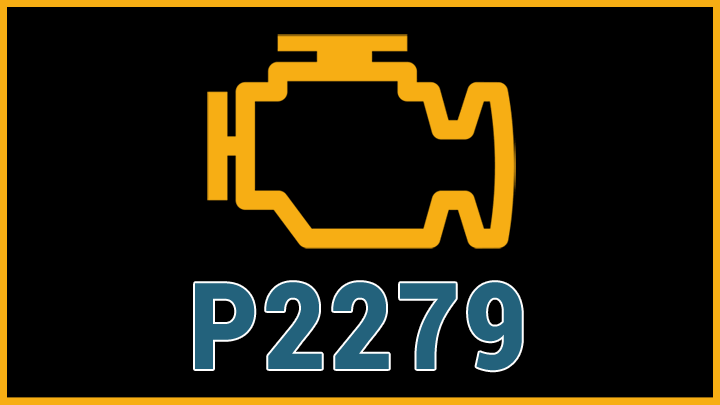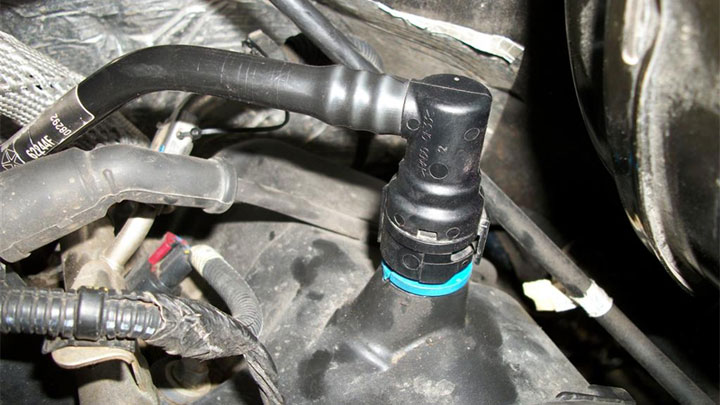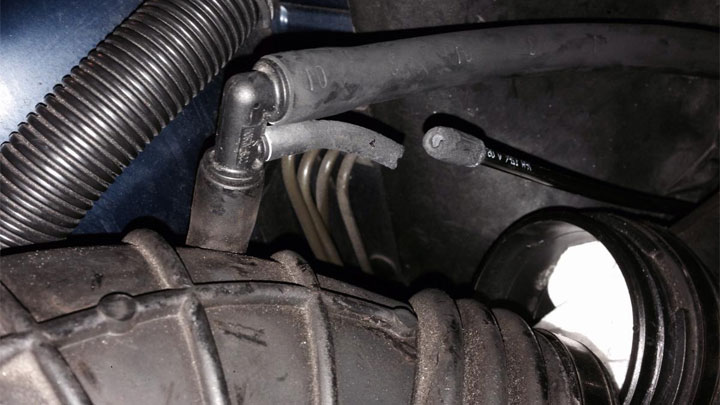P2279 Code (Symptoms, Causes, and How to Fix)
A vehicle’s PCM or ECM continuously monitors many systems, including engine vacuum. P2279 is a diagnostic trouble code that indicates the detection of an engine vacuum leak, signaling more air is entering than expected.
This code points to a potential issue that reduces engine performance. Keep reading to learn what causes a P2279 code and how to fix it the right way.

What Does Code P2279 Mean?
Diagnostic fault code P2279 is indicative of an ECM detected vacuum leak, in turn causing a measurable lean condition.
Simply put, a vehicle’s ECM has detected that more air has been introduced into the engine’s intake, than has been metered through the attached throttle body. The source of this unmetered air must be located and addressed, in order to prevent the occurrence of this fault.
This lean condition is detected via feedback from a vehicle’s exhaust-mounted oxygen sensors. Feedback of this type is factored against throttle position sensor readings and mass airflow sensor values, at which time any abnormalities in intake flow are flagged, generating the applicable fault.
In the case of diagnostic fault code P2279, a continuous flow of unmetered air throughout a vehicle’s intake tract has been recorded in the manner described above.
Since this unmetered air is introduced into each respective cylinder for combustion at an indiscriminate rate, the resulting lean condition will cause a host of operating-related symptoms to arise.
Symptoms of Code P2279

Diagnostic fault code P2279 is often accompanied by a host of secondary symptoms, some of which tend to be more noticeable in nature than others. Recognition of these symptoms often serves as the first step in the diagnostic process.
The following are several of the most common symptoms associated with DTC P2279.
- Illuminated check engine light
- Erratic idle
- Potential stalling
- Poor overall engine performance
- Possible lean condition resulting in a misfire
- Reduced fuel economy
- Engine “ping”
Causes of Code P2279

Diagnostic fault code P2279 can be caused by a host of underlying issues, some of which tend to be more severe in nature than others. Those who are familiar with these potential causes can often expedite the repair process as a whole.
The following are several of the most common causes of DTC P2279.
- Stuck or damaged PCV valve
- Damaged vacuum hoses
- Throttle body or intake manifold leak
- Leaking vacuum actuated devices
- Faulty brake booster
- Compromised air intake ducting
- Leaking fuel injector seal
Is Code P2279 Serious?
Diagnostic fault code P2279 is generally regarded as being of moderate severity. This stems from the fact that intake leak-related faults are typically accompanied by a host of secondary symptoms, many of which have a direct impact on a vehicle’s driveability. Therefore, a fault of this type is certainly deserving of one’s attention.
Stalling, hesitation, and erratic performance are all common symptoms associated with DTC P2279, and the chance of encountering each only increases as time passes without the issue at hand being addressed. Aside from this fact, a vehicle’s overall fuel economy is often impacted during the presence of a vacuum leak as well.
In any event, the root cause of a vehicle’s P2279 Diagnostic fault code should be diagnosed and repaired as soon as possible. As mentioned, the symptoms you experience with this fault will only get worse with time, further exacerbating the issue.
If you do not feel comfortable tackling such repairs yourself, an appointment should be made with a trusted automotive service center at the first available opportunity.
How to Fix Code P2279

The following steps can be used to assist in diagnosing your vehicle’s P2279 diagnostic fault code. As always, you should consult factory-specific service literature for your make and model of vehicle, before attempting any such repairs.
#1 – Check Additional DTCs
Before beginning the diagnostic process, check for the presence of any additional DTCs. Any such codes that are found should be thoroughly diagnosed before proceeding.
#2 – Inspect For Damaged Vacuum Lines
Begin by performing a thorough visual inspection of all underhood vacuum lines. Carefully listen for the faint hissing or squealing sound that often accompanies vacuum leaks.
Also, inspect junction points between multiple gasket surfaces, such as those that exist between an engine’s throttle body and intake manifold.
#3 – Check Dash Mounted Vacuum Accessories
Next, listen closely for similar sounds within the cabin of the vehicle, especially from beneath the vehicle’s dash. This is a particular place of interest, as many dash-mounted accessories are vacuum operated.
#4 – Locate Vacuum Leaks With Propane
If all other options fail to uncover the location of your vehicle’s vacuum leak, additional steps can be taken to assist in such matters. One of the most effective involves wanding an unlit propane torch over all the intake derived components beneath the hood.
Start at the vehicle intake ducting, moving forward toward the vehicle’s intake. One should also wand over all intake hoses. As this propane is pulled through a previously undetectable intake leak, a noticeable surge in engine RPMs will be detected.
- P0480 Code (Symptoms, Causes, and How to Fix) - Apr 19, 2024
- Car Temperature Gauge Stopped Working? (Here’s Why) - Apr 15, 2024
- Ignition Coil vs Coil Pack (What’s the Difference?) - Apr 8, 2024

I like the craftmanship in the tone of the detailed descriptions above.